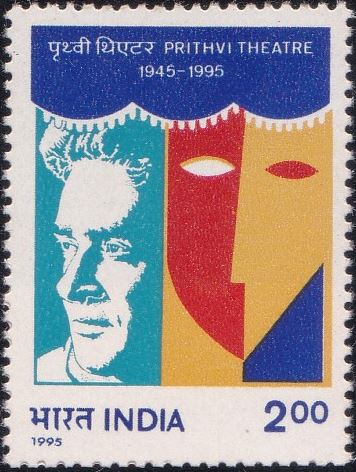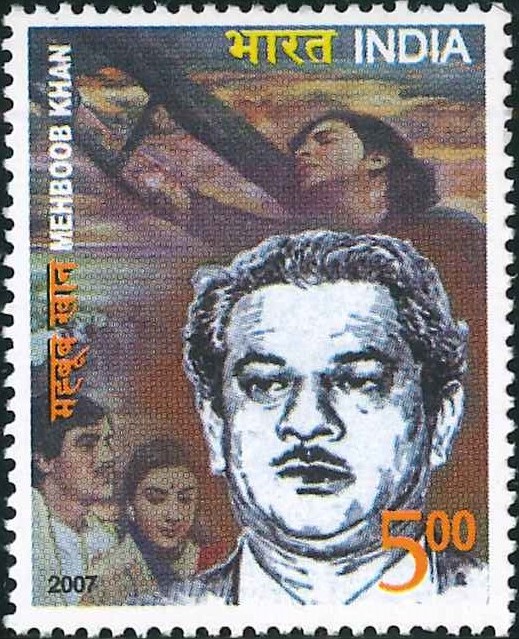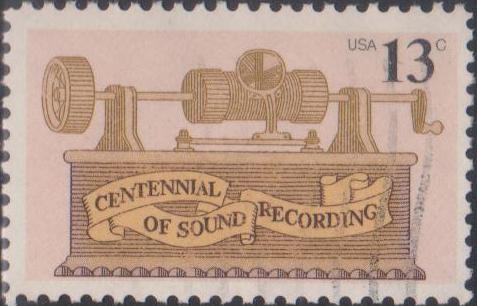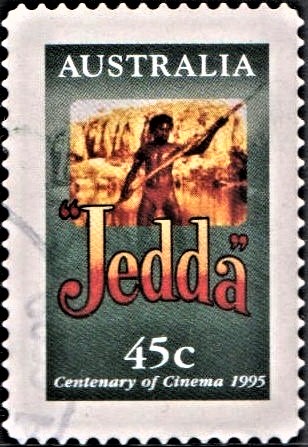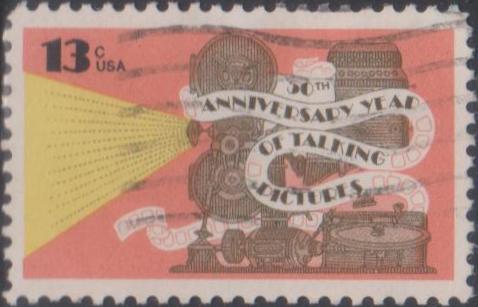
First Major Motion Picture with Sound
A commemorative postage stamp on the 50th Anniversary of the First Major Motion Picture with Sound :
 Issued by United States of America
Issued by United States of America
Issued on Oct 6, 1977
Design : This U.S. 13¢ stamp, designed by Walter Einsel of Westport, Connecticut, commemorates a half century of progress in talking picture technology and celebrates the event that made the words “Let’s go to the movies” an integral part of the American way of life.
Type : Stamp, Postal Used
Denomination : 13 cents
About :
- On October 6, 1927, a film starring the popular musical comedy performer, Al Jolson, and featuring four interludes using the year-old Vitaphone sound system premiered at the Warner Theatre on Broadway in New York City. The movie was “The Jazz Singer,” and it revolutionized the motion picture industry and heralded the development of the movies as an American art form.
- “The Jazz Singer,” which linked the dramatic feature of sound with Al Jolson’s charismatic personality, ended the era of silent pictures. Americans were already in love with the movies, flocking to watch the shieks and vamps flickering on the silver screen and creating public idols of actors like Rudolph Valentino and Theda Bara. But previous talking films had commanded so little public attention that “The Jazz Singer” appeared to have brought sound to the movies overnight.
- An imaginative Englishman named Donisthorpe thought of the idea of movies with sound as early as 1878. From the time Thomas Edison invented the phonograph, he too envisioned pictures as an adjunct, and in 1912 he combined his phonograph with his kinetoscope to produce one-reel talking pictures.
- There was a major drawback to mechanically reproduced sound, however. It was not nearly loud enough to fill a theatre. An inventor named Lee DeForest overcame this problem with a vacuum tube amplifier. DeForest also eliminated the difficulty of synchronizing the sound with the actors’ lips by photographing the sound waves onto a narrow band at the edge of the film.
- Significant as these contributions were, and although DeForest starred the top vaudeville entertainers of the day, the films with audio which he introduced in 1923 did not gain public acceptance. People still regarded “talkies” as a novelty.
- It remained for “The Jazz Singer” to capture the imagination of film-goers and film-makers alike.
Subscribe
Login
0 Comments
Oldest


